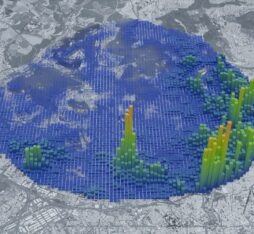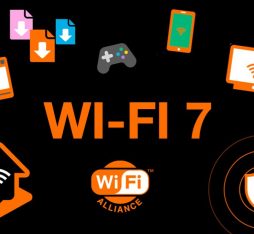“5G incorporates energy efficiency by design mechanisms to significantly reduce energy consumption per bit of information transported”
The progress made by mobile networks over the years is not measured only by their operational performance and the service delivered to the end customer. They are also judged on their ability to take into account societal and environmental issues, particularly those related to energy consumption. On this subject, the progress made is substantial and documented: each transition from one generation of networks to another has brought about a gain of a factor of 10 in energy efficiency[1].
An already visible gain in efficiency
The switch to 5G should further improve this performance. In the test cities, the new network is already twice as energy efficient as 4G. And these are only the first deployments, carried out with technologies that are still young and with very lightly loaded networks.
This improvement is based on a technological leap forward. In 5G, the load of traffic flowing on the networks will be greater for energy consumption of the same order of magnitude, mechanically resulting in a reduction in the share of electricity consumption per bit transported. 5G will be more efficient than 4G in terms of the amount of bits of information delivered for a given unit of energy consumption. The technical and operational levers supporting this progress are notably linked to the optimisation of processor and transmitter technologies and the implementation of network-sharing mechanisms.
Built-in antennas for more efficiency
A major breakthrough made by 5G concerns the implementation of new antennas called Massive Multiple-Input Multiple-Output (Massive MIMO). These transmit the signal only in the direction of the communicating mobile (known as beams), rather than over a wide area as the antennas commonly used in 4G do. This feature significantly increases the throughput delivered by an antenna, as multiple beams can be used simultaneously, each being able to reuse the cell’s frequencies. Massive MIMO antennas are characterised by an ultra-integrated design. They concentrate the power amplifiers (whose efficiency has been improved compared to 4G) at the radome (antenna shelter) by combining radiating elements, analogue electronics, and a digital part dedicated to beam management functions. If the first implementations are poorly optimised, the expected progress in the integration and densification of the components of the antenna will greatly reduce the energy consumption of the bricks that make up the antenna.
“The projections that have been made by antenna manufacturers are encouraging,” said Eric Hardouin, Director of the Ambient Connectivity Research, Orange Labs Research. “While a 5G antenna consumes three times more energy on average today than a 4G antenna, this ratio is expected to drop to 50% by 2021 and 25% by 2022. Above all, for this energy consumption, a 5G antenna manages a bandwidth five times higher and can deliver a higher throughput to serve more users simultaneously.”
Advanced “sleep” modes
One of the most significant developments associated with 5G is the widespread use of deep Sleep Modes. The basic principle is simple: to selectively turn off one or more devices in the absence of traffic. On this topic, 4G was limited due to the design of its radio interface, a base station that has to transmit reference signals about 1,000 times per second, even without an active mobile in the cell. In fact, the latest generation of mobile networks could only allow the implementation of the most basic first level of Sleep Mode (four in all).
5G, on the other hand, provides for the configuration of transmission-free time slots in non-traffic conditions, in order to enable activation of more advanced and energy-efficient Sleep Modes. “This functionality has been pushed since the new network was designed,” says Eric Hardouin, “and has given rise to work between carriers and equipment suppliers in the NGMN forum, prior to standardisation. A White Paper published in 2015[2] reviews this requirement for energy efficiency integrated by design and driven by Orange. It sets out the possibility for a carrier to set a compromise between network performance and energy consumption: a reduction in the operational capacities of the network can be justified in view of the associated energy benefit. This is the case with Sleep Modes. An interval without transmission can be set to a range of 5-100 ms, but this means that a terminal can take more time to hang on to a cell – without the user noticing it.”
20 times less energy consumed
The first level of Sleep Mode, already active in 4G, involves turning off the power amplifier and generates a 20% reduction in energy consumption. 5G will be able to go up to level 3, with certain parts of the radio frequency stage and the digital part of the antennas being put into Sleep Mode, for an energy saving of around 50%.
Because they have integrated the energy-efficiency issue from the outset, 5G technologies are expected to divide the energy consumption per gigabit transported by a factor of 10 compared to 4G once they reach maturity by 2025, and then by a factor of 20 by 2030.
But, with regard to the increase in traffic expected over the same period, necessary educational and support activities related to customer usage will also have to be carried out to move toward optimal energy conservation.
[1] Energy efficiency is defined as the opposite of the energy consumed per transmitted bit, or as the number of bits transmitted for every unit of energy consumed.











